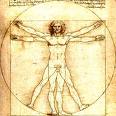|
Zen: The Circle of Continuous Perfection
In
Zen, the circle represents the process of
continuous perfection, leading to a self with a difference. This process has
no beginning and no end. The practitioner following a long pathway around
the circumference of a circle, which eventually leads back to the starting
point, but now he or she has had the experience of the journey and is
changed from the person he or she once was.
The self is thus both the reason
for the journey and the goal of the journey, both the path and the fruit of
the path, both the question and the answer. And by "self" Zen means
self-knowing, the recognition of our essential nature, which is ultimately
identified with "emptiness", the infinite potential, from which all things
arise.
 The Wheel of Life: East vs. West
The Wheel of Life: East vs. West
 Balanced Business Wheel
Balanced Business Wheel
Yin and Yang
Yin and Yang. Hot and cold. Male and female.
The philosophy of yin and yang lies at the heart of Chinese culture. The
first references to yin and yang come from the I Ching, the five classic
works compiled and edited by Confucius. Taken literally, yin and yang mean
the dark side and sunny side of a hill. People commonly think of yin and
yang as opposing forces.
However, it is really more appropriate to view them
as complementary pairs. The Chinese believe problems arise not when the two
forces are battling, but when there is an imbalance between them in the
environment. Floods, health disorders, business problems, divorce, or even a
fire in the kitchen – all can be attributed to disharmony in the forces of
yin and yang.
 The Tao of Happiness
The Tao of Happiness
Dharma Wheel
A Buddhist emblem resembling a wagon wheel,
with eight spokes, each representing one of the eight tenets of buddhist
belief. The circle symbolizes the completeness of the Dharma, the spokes
represent the eightfold path leading to enlightenment. It is drawn from an
Indian symbol, but instead of representing Samsara, or endless rebirth, it
symbolizes overcoming obstacles. Similar to the wheel of a cart that keeps
revolving, it symbolizes the Buddha's teaching as it continues to be spread
widely and endlessly.
The eight spokes of the wheel represent the Noble
Eightfold Path of
Buddhism, the most important Way of Practice. The Noble
Eightfold Path refers to right view, right thought, right speech, right
behavior, right livelihood, right effort, right mindfulness, and right
meditation.
 The Dharma Wheel and the Noble Eightfold Path
The Dharma Wheel and the Noble Eightfold Path
Proportions of Man
 The
Vitruvian Man, also known as Proportions of Man, is a
world-renowned drawing created by Leonardo da Vinci. It is
accompanied by notes based on the work of Vitruvius. The drawing
depicts a nude male figure in two superimposed positions with his
arms and legs apart and simultaneously inscribed in a circle and
square. The
Vitruvian Man, also known as Proportions of Man, is a
world-renowned drawing created by Leonardo da Vinci. It is
accompanied by notes based on the work of Vitruvius. The drawing
depicts a nude male figure in two superimposed positions with his
arms and legs apart and simultaneously inscribed in a circle and
square.
The drawing itself is often used as an
implied symbol of the essential symmetry of the human body, and by
extension, to the universe as a whole. It is believed that Leonardo
symbolized the material existence by the square and spiritual
existence by the circle.
|